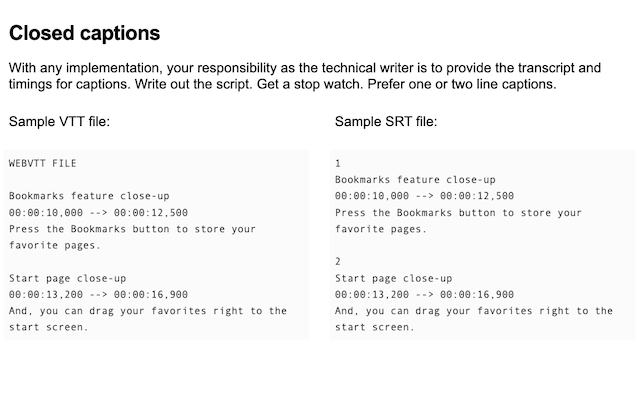2015 samples
WGAC 2.0 for technical writers
I was invited to speak at tekom's tcworld conference in Stuttgart, Germany. Tcworld deals with technical communication across a ton of different industries, from manufacturing to medical equipment to software. It's all over the place.
At the time, "digital publishing" was slowly coming to the surface for the monolithic corporations that operate globally. To be honest, it's still coming to some of them. But, I had the chance to present some helpful tips to technical writers who may just be getting up to speed with publishing on the web.
My presentation focused mainly on writing techniques and providing accessible alternatives to images, videos and that sort of thing. The aim is to meet legal requirements that are informed by the World Wide Web Consortium's (W3C) specification and guidance document called the Web Content Accessibility Guidelines (WCAG) version 2.0.

I recommended that tech writers compose in plain text, markup that text using Gruber's Markdown syntax, and then convert to HTML. It sounds fairly simple, but there's some great tips in the talk about how to be the most effective (and accessible) writer on the web.
Copy Bot
This project was born out of frustration. There's a growing trend for poor copy optimization on the web these days, where keyword density is the primary goal. Get users to the site. Except, when search-engine optimized copy is prioritized over readability or transaction, you miss out on your goals. Do you get more traffic? Yes. But once a person lands on your site, they can't make heads or tails of what they're looking at and they leave.

To illustrate how ridiculous some of these types of constructions look to a trained writer, I whipped up a bot that implements keywords into (mostly) valid statements, adds a hashtag and let you post them on Twitter. His name is Copy Bot and, if you don't care about your customers, he can save you a hell of a lot of money on writers.